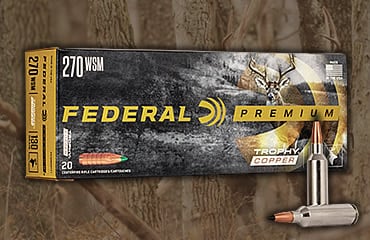It’s not a big deal if you have to go to a lead-free bullet.
There’s a big push to get rid of lead. In the sporting world, that includes everything from fishing weights to bullets. Eco-warriors argue lead left in the environment from hunters and fishermen is killing endangered species, and several states have responded by banning lead ammunition and sinkers.
I can’t speak much to the fishing side, but my view is the notion of hunter-induced deaths of birds eating lead-contaminated entrails is way overblown. Ditto for any dangers to hunters eating the fruits of their labors.
Copper isn’t as soft as lead, but manufacturers have enabled controlled expansion through cuts and polymer points that help separate copper petals. There’s no escaping that copper doesn’t expand as well and doesn’t have the same energy transfer as traditional lead ammunition, however. Change is hard, and forced change is even harder. One thing you don’t want when heading to the woods is a lack of confidence in your rifle or ammunition.
On the bright side, there is a nice selection of all-copper ammunition on the market. The accuracy is outstanding, and it’s not any more expensive than traditional lead ammunition.
While I tend to agree with those who say lead out-performs copper for lethality, I have no qualms about using all-copper ammunition, either.
If you’re currently using lead or lead-core ammunition with success, don’t sweat it. Use what you like as long as it’s legal. If lead is prohibited or you’re concerned about the environment and don’t want to take any chances, make the switch.
A transition to copper will be fairly seamless, and you won’t miss a beat. Try a few different loads to see which your gun likes, and then hunt as usual.
So get the lead out – or don’t. Just make sure to practice with what you’ll use in the field.
Read Recent Tip of the Week:• Have Stand, Will Travel: If you want to enjoy consistent action, don't be predictable.




.png)